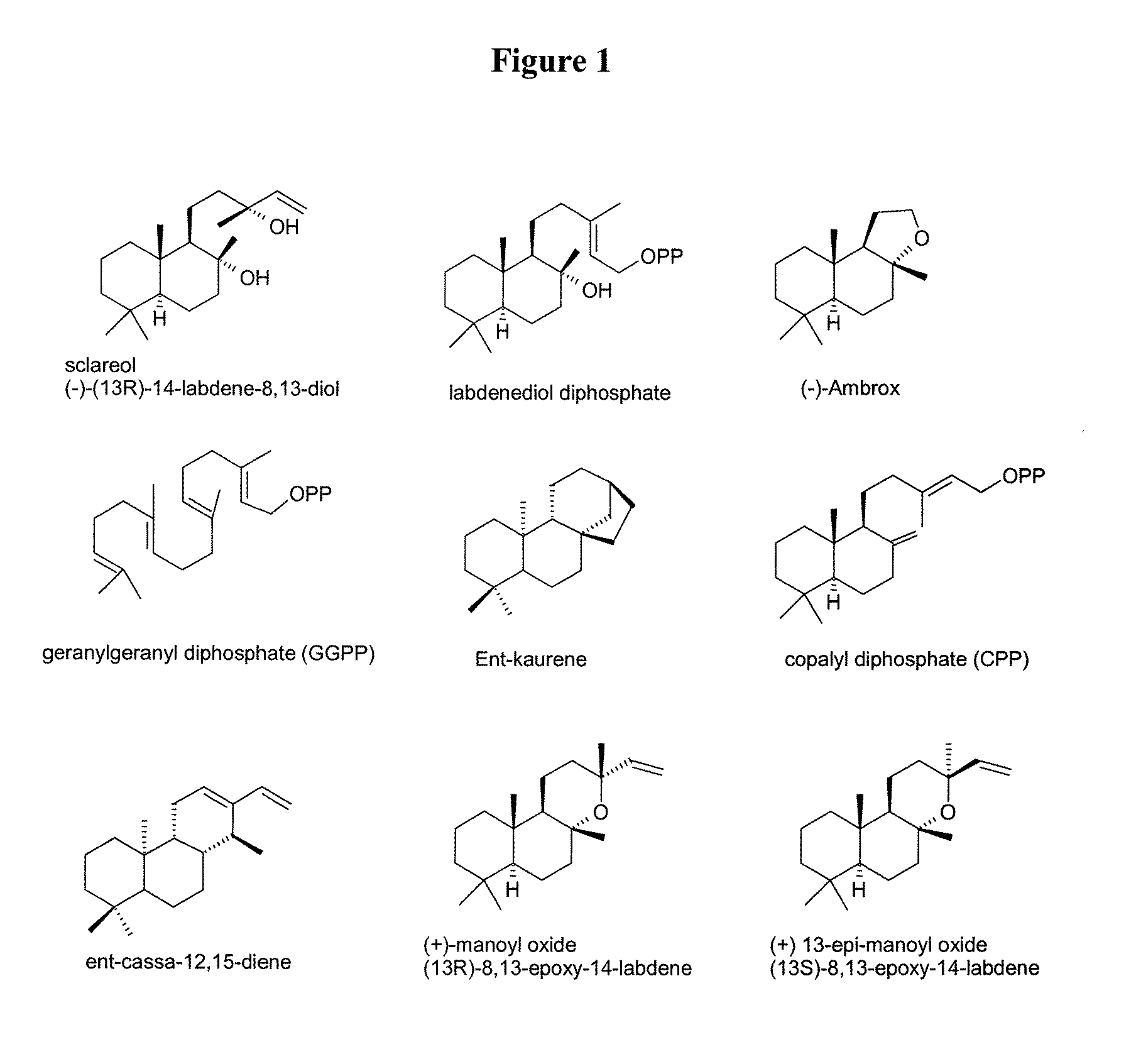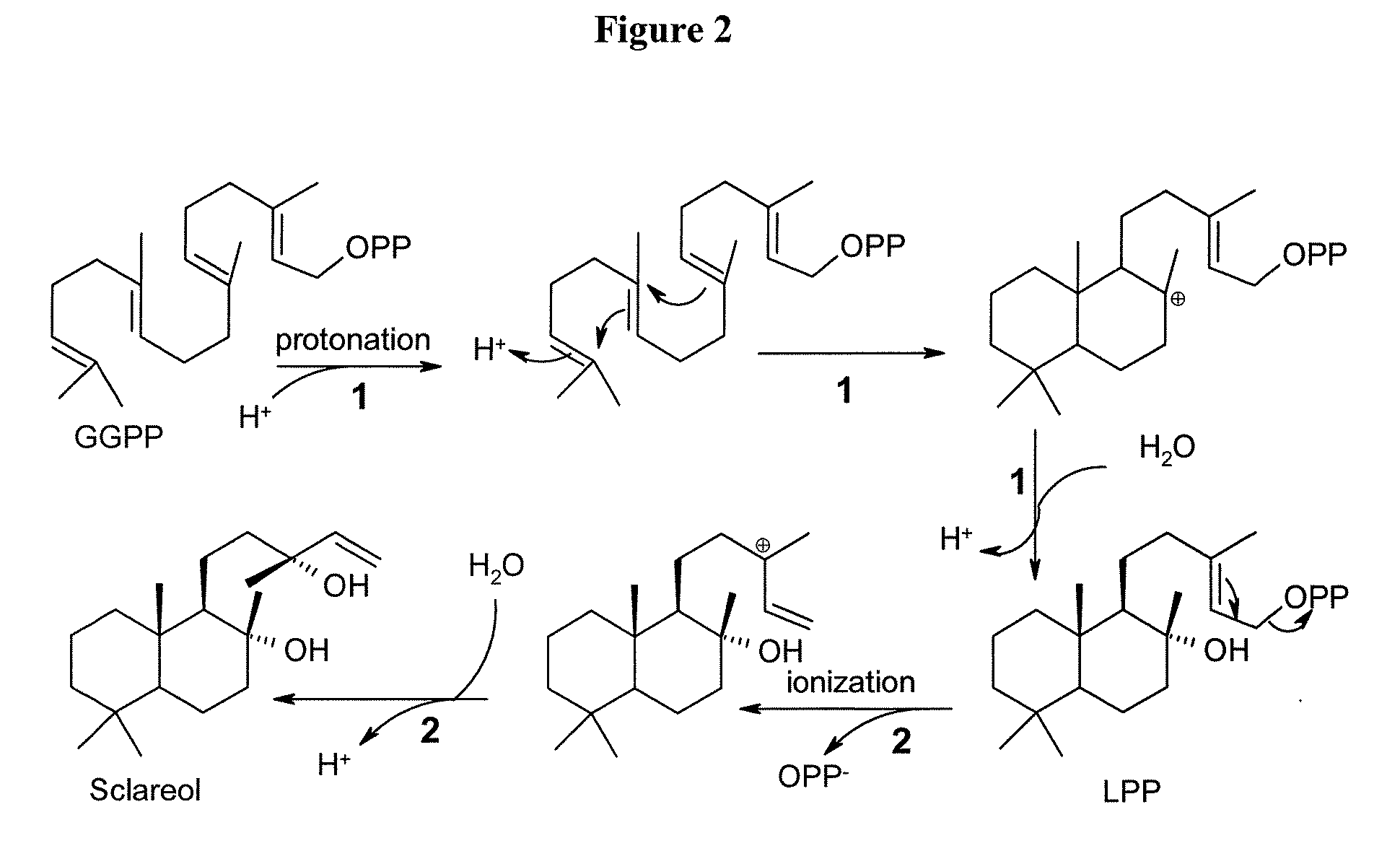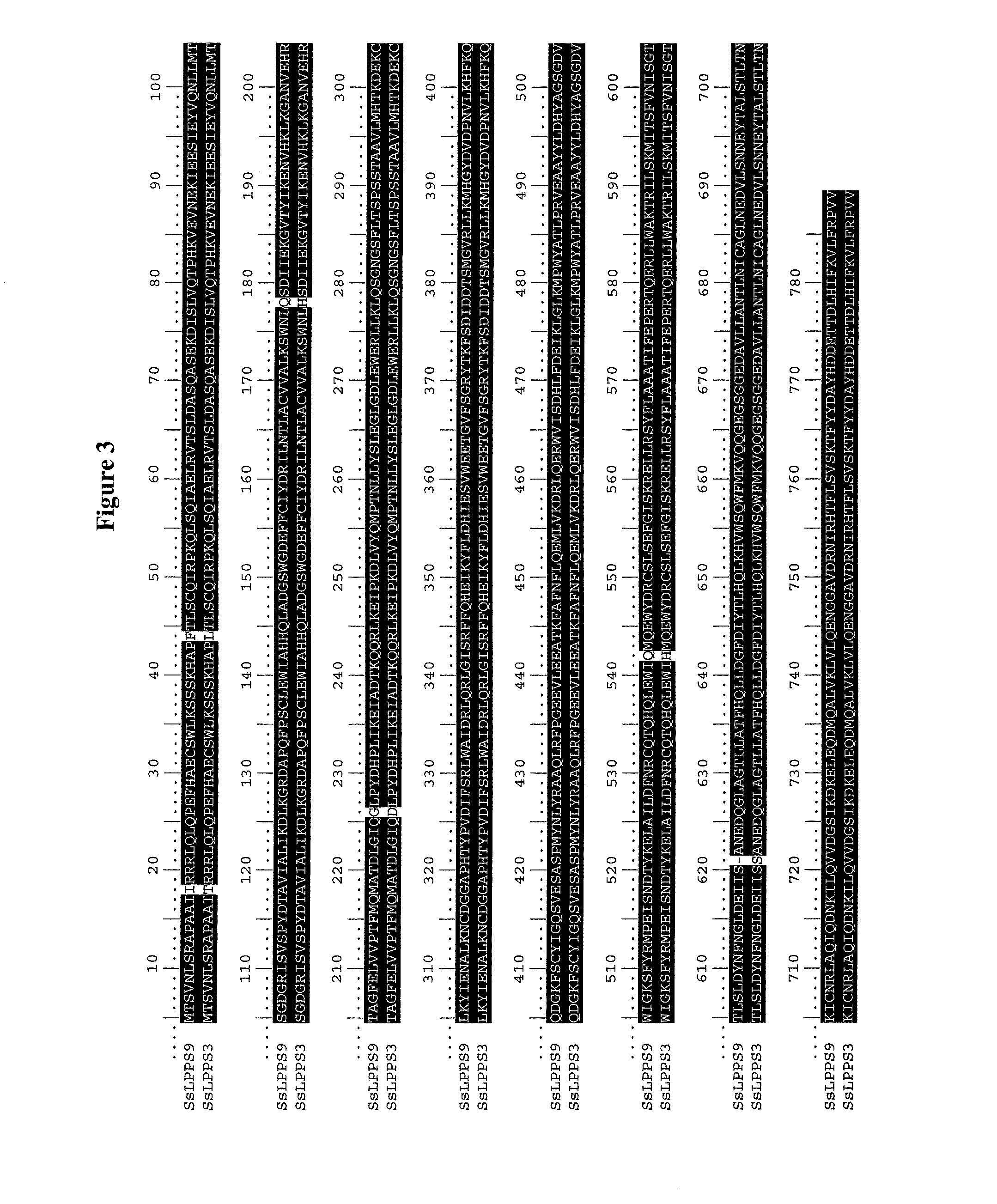Method for producing sclareol
a sclareol and sulfate technology, applied in the field of sclareol production methods, can solve the problems of not being able to achieve the effects of economic synthesis, and not being able to achieve the effects of sclareol production and production
- Summary
- Abstract
- Description
- Claims
- Application Information
AI Technical Summary
Benefits of technology
Problems solved by technology
Method used
Image
Examples
example 1
[0186]Isolation of LPP Synthase Encoding cDNAs from Salvia Clarea by a PCR Approach
A. Plant Material and RNA Extraction.
[0187]Salvia sclarea developing flower buds (1.5 to 2 cm length, 1-2 days old) were collected in fields of Bassins (Switzerland) and directly frozen in liquid nitrogen. Total RNA was extracted using the Concert™ Plant RNA Reagent from Invitrogen (Carlsbad, Calif.) and the mRNA was purified by oligodT-cellulose affinity chromatography using the FastTrack® 2.0 mRNA isolation Kit (Invitrogen, Carlsbad, Calif.) according to the manufacturer's instructions. A cDNA library was constructed using the Marathon™ cDNA Amplification Kit (Clontech, Mountain View, Calif.).
B. Polymerase Chain Reactions for Amplification of Diterpene Synthases cDNAs
[0188]Amino acid sequences of class I and II diterpene synthases from different plants were aligned and conserved motifs were selected. Degenerate oligonucleotides sequences were deduced from these conserved amino acid motifs. The Motif...
example 2
Heterologous Expression of the S. Sclarea LPP Synthase in E. Coli
[0192]The pETDuet-1 (Novagen, Madison, Wis.), designed for expression under the control of a T7 promoter, was used for expression in E. coli cells. To construct the expression plasmid, the open reading frame of SaTps1 (SEQ ID NO:20) was amplified by PCR from the cDNA library with the forward and reverse primers SaTps-Nde (SEQ ID NO:22)) and SaTps-Kpn (SEQ ID NO:23)) designed to introduce an NdeI site immediately before the start codon and a KpnI site after the stop codon. Since the open reading frame contains an NdeI site at position of 1614 of the open reading frame, this amplification was performed in two steps by overlap extension PCR (Horton et al, Gene 78, 61-68, 1989), using the primers SaTps-Nde (SEQ ID NO:22) and SaTps-Kpn (SEQ ID NO:23) in combination with the primers Satps-mut1f (SEQ ID NO:24)) and Satps-mut1r (SEQ ID NO:25)), designed to remove the NdeI site without altering the amino acid sequence. The res...
example 3
Purification of the S. Sclarea LPP Synthase and Enzymatic Activities
[0197]To further characterize the recombinant diterpene synthases, we undertook to purify the SsLPPs3 and SsLPPs9 enzymes (SEQ ID NO:1 and 2).
[0198]The PCR2.1-Topo plasmids containing the SsLPPs3 and SsLPPs9 cDNA (SEQ ID NO:4 and 5) (Example 2) were digested with NdeI and Sad and the inserts were ligated into the pET28a(+) plasmid (Novagen). The resulting expression plasmids (pET28-SsLPPs3 and pET28-SsLPPs9) contain the cDNAs with a 5′-end modification (SEQ ID NO:26 and 27) designed to express the proteins with an N-terminal hexa-histidine tag. Purification was performed under native conditions using the ProBond™ Purification System (Invitrogen) following the manufacturer protocol excepted that, for the elution, imidazole was replaced by L-histidine to minimize inhibition of the enzyme. Using this approach, the SsLPPs3 and SsLPPs9 recombinant enzymes could be purified to apparent homogeneity (FIG. 5).
[0199]The affin...
PUM
| Property | Measurement | Unit |
|---|---|---|
| Fraction | aaaaa | aaaaa |
| Fraction | aaaaa | aaaaa |
| Fraction | aaaaa | aaaaa |
Abstract
Description
Claims
Application Information
 Login to View More
Login to View More - R&D
- Intellectual Property
- Life Sciences
- Materials
- Tech Scout
- Unparalleled Data Quality
- Higher Quality Content
- 60% Fewer Hallucinations
Browse by: Latest US Patents, China's latest patents, Technical Efficacy Thesaurus, Application Domain, Technology Topic, Popular Technical Reports.
© 2025 PatSnap. All rights reserved.Legal|Privacy policy|Modern Slavery Act Transparency Statement|Sitemap|About US| Contact US: help@patsnap.com



